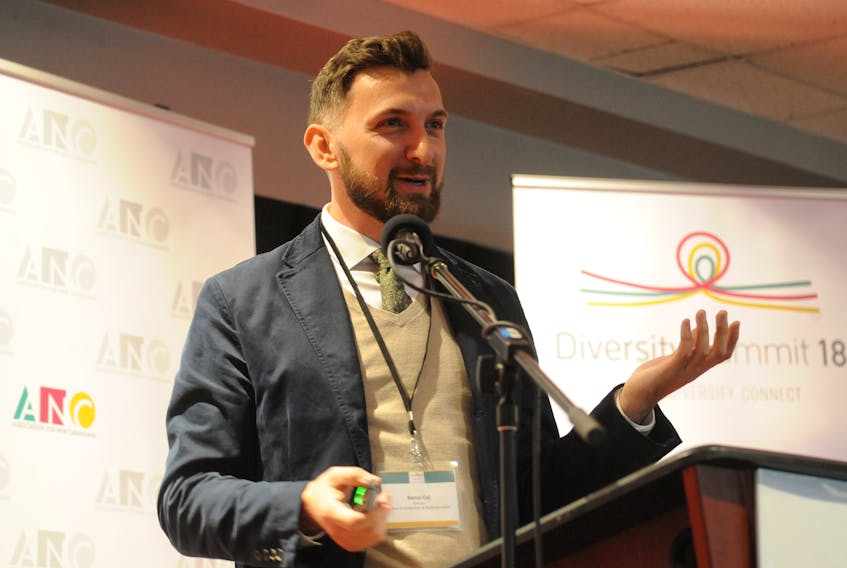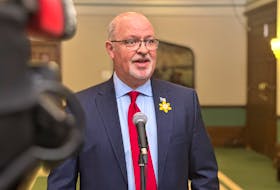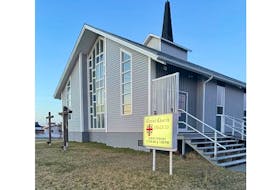Remzi Cej has plenty of experience facilitating newcomer settlement and integration and encourages everyone in Newfoundland and Labrador to start becoming better at it themselves.
Immigration to the province has been on the rise for the last decade, especially in the past five years, and is showing no sign of slowing down.
Cej is the director of the Office of Immigration and Multiculturalism with the province’s Department of Advanced Education, Skills and Labour, and was one of the guest speakers at Diversity Summit 2018 in Corner Brook Tuesday.

Related stories:
Association for New Canadians gearing up for Diversity Summit in Corner Brook
Corner Brook celebrates its diversity
Roundtable discussion reflects on better integration of foreign and local culture in Corner Brook
The three-day conference, which wraps up today, has brought together industry and community leaders to discuss the opportunities and challenges of immigration and growing cultural diversity in Newfoundland and Labrador.
During his presentation, Cej presented plenty of data explaining the recent trends in immigration to the province and the importance of preparing for increased diversity across the provincial population.
“What’s coming ahead is further growth because, in many ways, diversity is a fact of life and will become something we live with for the foreseeable future,” he said.
He also offered several tips on what people, communities and the province in general can do to make people who are new to Newfoundland and Labrador feel welcome.
He gave one example based on a conversation he had with a member of Corner Brook’s growing Muslim community, who had indicated there is a need for them to find a suitable prayer space. Cej said that person was hesitant to ask around because the thought of opening a Muslim prayer space might make some local residents unjustifiably anxious.
“I think Corner Brook is understanding enough to know that diversity does not mean denying somebody the right to be able to pray to their god,” Cej said of his response to that person.
Some facts about immigration in Newfoundland and Labrador:
- Between 2007 and 2017, more than 7,000 people became permanent residents of Newfoundland and Labrador. Last year, 826 immigrants were supported by the province’s Office of Immigration and Multiculturalism.
- Immigrants to Newfoundland and Labrador have come from more than 80 countries around the world.
- Around 67 per cent of immigrants come to the province for work. Between 20 and 24 per cent have come to reach safety and escape from war, conflict or persecution in their home countries. The rest have come to join family members who are already here.
- Those who come to Newfoundland and Labrador to join family members are more likely to stay, compared to those who have come alone. Around 75 per cent immigrants who have come to reunite with family remain here five years after their arrival.
- Around 59 per cent of immigrants come to address longstanding labour shortages in Newfoundland and Labrador. They go through labour market testing to make sure no local workers were available for the jobs they were filling.
- Immigrants to Newfoundland and Labrador are generally younger than most of the province’s native residents. The median age of Newfoundlanders and Labradorians is 45, while the median age of immigrants is 29. This has implications on the education and health care systems and on other public services, but they are generally positive.

Some tips on how to prepare for increased population diversity:
- Provide more culturally appropriate and competent services and goods, such as restaurants and grocery stores being more culturally sensitive.
- Celebrate and commemorate a more diverse set of holidays and events to include those recognized by other cultures.
- Embrace diversity for increased social and economic growth and make newcomers feel welcome in the community and not isolated.
- Establish a model for community-level inclusiveness supports in rural and remote areas. The level of diversity, not to mention how cultural gaps in any given community should be addressed, will vary from place to place.
Source: The Office of Immigration and Multiculturalism in the Department of Advanced Education, Skills and Labour









